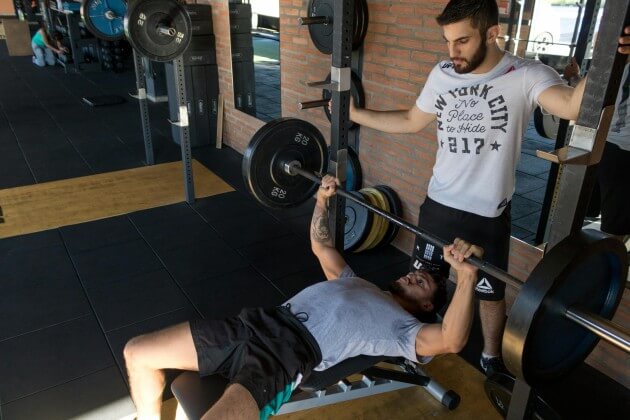Advertisement
Knowing how to become a fitness trainer might help you decide if this is the career for you.
We will discuss what fitness trainers perform, the various sorts, how to become one, and answers to some frequently asked questions regarding this career path.

What Does A Fitness Trainer Do?
Fitness trainers are employed in working with persons or small groups to assist them better their health and fitness.
They have several different duties, such as making exercise programs for clients; teaching them how to do exercises in a safe and proper way; or recommending changes they can make into their daily lives with an aim of maximizing the positive results from exercising and training.
Advertisement
They also practice with athletes, bodybuilders or even normal individuals.
What Are the Different Types of Personal Trainers
We have different types of personal trainers. However, they always have identical educational and training backgrounds.
Personal trainers are classified into the following categories:
· Fitness trainer
· Lifestyle coach
· Exercise Specialist
· Health coach
· Wellness specialist
· Sports coach
· Bodybuilding coach
How To Become A Fitness Trainer
If you want to become a fitness trainer, follow these six steps:
1. Consider a degree program
Although almost all of the fitness trainers do not have a high school certificate and no further education, it is estimated that more than 95 percent hold either an associate degree or bachelor’s.
You can obtain a degree in one of the following areas to increase your competitiveness in the fitness industry:
Exercise science
This degree includes coursework in nutrition, exercise, fitness conditioning and human anatomy. With education in the field of exercise science, a fitness trainer can work with clients to condition their body and learn how to detect as well as avoid injuries.
Kinesiology
This study covers such topics as the anatomy, human movement, and fitness and health. With their Kinesiology degrees, fitness trainers have a strong basis to develop exercise routines and injury prevention methods.
Physical education
This curriculum includes subjects such as anatomy, motor skill development, exercise psychology and fitness training techniques.
Fitness trainers who have a physical education degree can teach customers the basics of workouts and fitness plans.
2. Speak with an advisor
There are several benefits of speaking with a mentor or advisor. First, they could help you find what education and credentials are needed to succeed in the fitness training industry.
They can also help you develop your regimens so that they may assist your consumers more effectively.
Lastly, if you apply for fitness trainer positions, they can be aware of available positions and be able to serve as a reference.
3. Get a fitness trainer certification
After that, you can obtain the credentials needed to work with clients. To assist customers in an emergency, the majority of fitness trainers require certificates in automated external defibrillators (AEDs) and cardiopulmonary resuscitation (CPR).
Usually, these credentials need passing an exam and attending an in-person one-day course.
A professional certification is another need that many employers have for personal trainers. The choices include the following:
· ACE Personal Fitness Trainer Certification
· American College of Sports Medicine – Certified Personal Trainer
· American College of Sports Medicine – Certified Personal Trainer
· National Academy of Sports Medicine – Certified Personal Trainer
· National Council on Strength & Fitness – Certified Personal Trainer
4. Develop key skills
To be an effective fitness trainer, you need to develop stamina, fitness, communication skills, problem-solving skills, and customer service skills.
5. Create your resume
Once you’ve honed your abilities, you can start applying for positions as fitness trainers.
Create a resume that highlights your training, credentials, relevant job history, and career goals and aspirations for the fitness trainer position.
6. Build a client roster
Fitness trainers work with one-on-one customers. Whether you operate for yourself or for a fitness establishment, you must maintain a client list of existing and potential clients.
You can be able to build your customer list by asking current clients for referrals, advertising your services, or networking with future clients.
The steps listed above are a stepping stone to becoming a fitness trainer. If you have any contributions or questions to ask, please drop a comment in the comment box below.
Advertisement






